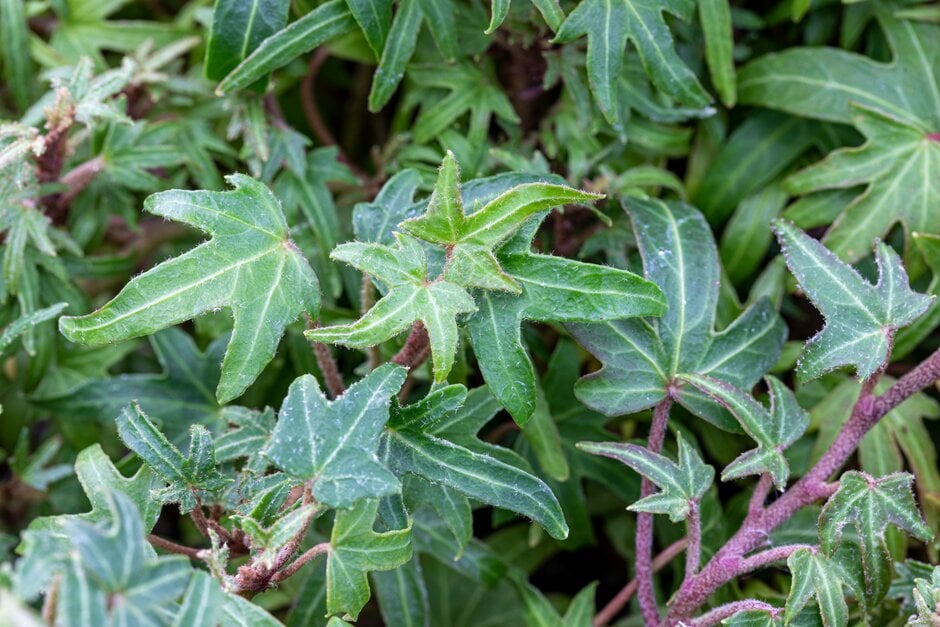Size
Ultimate height
0.1–0.5 metresTime to ultimate height
2–5 yearsUltimate spread
0.1–0.5 metresGrowing conditions
Moisture
Moist but well–drained, Well–drainedpH
Acid, Alkaline, NeutralColour & scent
| Stem | Flower | Foliage | Fruit | |
| Spring | Green | |||
|---|---|---|---|---|
| Summer | Green | |||
| Autumn | Green | |||
| Winter | Green |
Position
- Full shade
- Full sun
- Partial shade
Aspect
East–facing or North–facing or South–facing or West–facing
Exposure
Sheltered Hardiness
H6Botanical details
- Family
- Araliaceae
- Native to GB / Ireland
- No
- Foliage
- Evergreen
- Habit
- Bushy, Trailing
- Potentially harmful
- Harmful if eaten: skin irritant/allergen. Wear gloves and other protective equipment when handling. Pets (dogs, cats, rabbits, rodents): Harmful if eaten, skin irritant/allergen. For further information and contact numbers regarding pets, see the HTA guide to potentially harmful plants
- Genus
Hedera are evergreen climbing shrubs clinging by aerial roots. Clusters of small yellow-green flowers are followed by usually black berries. Foliage of flowering shoots is often less deeply lobed than that of the sterile, climbing shoots
- Name status
Accepted
How to grow
Cultivation
Tolerant of a range of soils and conditions but grows best in fertile, humus-rich well-drained alkaline soil in a sheltered spot. Ideal for patio containers, or on a wall or trellis, makes a useful houseplant. See hedera (ivy) cultivation
Propagation
Propagate by semi-ripe cuttings
Suggested planting locations and garden types
- Patio and container plants
- Rock garden
- hanging basket
- Low Maintenance
Pruning
No pruning required
Pests
May be susceptible to aphids, scale insects, vine weevil and glasshouse red spider mite
Diseases
May be susceptible to honey fungus (rarely) and a leaf spot
Get involved
The RHS is the UK’s gardening charity, helping people and plants to grow - nurturing a healthier, happier world, one person and one plant at a time.
